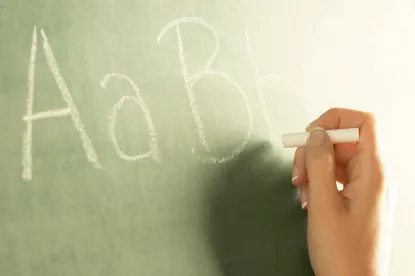In re Cuozzo Speed Technologies, LLC
In re Cuozzo presented the Federal Circuit with one of its first opportunities to review a final written decision of the Patent Trial and Appeal Board (the “Board”) in an inter partes review (“IPR”) proceeding. As a result, the appeal addressed several issues of first impression that are at the core of the Board’s trial proceedings, including the proper standard of claim construction during Board trial proceedings, the reviewability of the Board’s institution decisions, and standards applied to a patent owner’s motion to amend claims during an IPR.
As described in more detail below, the Federal Circuit largely upheld the Board’s practices concerning those issues. In so doing, the Cuozzo decision substantially clarifies the standards and procedures that will be applicable to the increasingly popular IPR proceedings.
A. Claim Construction – Broadest Reasonable Interpretation
Since its inception, the Board has applied the broadest reasonable interpretation standard when construing claims during an IPR according to 37 C.F.R. § 42.100(b), which has engendered considerable commentary and debate. Cuozzo challenged that rule directly, arguing that the Board should have construed the claims using the standards applied in district court rather than the broadest reasonable interpretation.
Recognizing that Congress failed to specify in the America Invents Act the appropriate standard for claim construction, the court looked to historical practice and the PTO’s rulemaking authority to assess the broadest reasonable interpretation standard. The court noted that the PTO has for more than 100 years construed claims according to their broadest reasonable interpretation in various proceedings, including adjudicative contexts such as interferences. Although Congress was aware of the PTO’s longstanding practice, the court found no indication of legislative intent to deviate from the broadest reasonable interpretation standard. In addition, the court concluded that Congress had granted the PTO express authority to regulate the standards applicable to IPR proceedings under 35 U.S.C. § 316(a) and that the agency’s broadest reasonable interpretation standard represented a reasonable interpretation of the governing statutes.
Accordingly, the court approved the Board’s use of the broadest reasonable interpretation during IPR.
B. Reviewability of Institution Decisions
Cuozzo also argued that the Board had improperly instituted trial on to two claims by relying on grounds not presented in Garmin’s petition. In so doing, Cuozzo challenged the PTO’s position that 35 U.S.C. § 314(d) precludes review of the Board’s institution decisions under any circumstances.
The Federal Circuit had previously held that § 314(d) prohibits (i) review of decisions denying institution of an IPR, St. Jude Med. v. Volcano Corp., 749 F.3d 1373 (Fed. Cir. 2014), In re Dominion Dealer Solutions, LLC, 749 F.3d 1379 (Fed. Cir. 2014), and (ii) interlocutory review of decisions to institute an IPR, In re Procter & Gamble Co., 749 F.3d 1376 (Fed. Cir. 2014). But the court had never squarely addressed the reviewability of an institution decision in an appeal from a subsequent final written decision.
The court concluded that § 314(d) “prohibits review of the decision to institute IPR even after a final decision.” Furthermore, according to the court, there was no bar preventing the Board from finding the two claims at issue unpatentable based on grounds not specifically presented in the petition. Even so, the court declined the PTO’s request to foreclose all review of institution decisions. Instead, the court left open the possibility that, after a final decision, mandamus might be available to challenge a decision to institute an IPR “where the PTO has clearly and indisputably exceeded its authority.” In Cuozzo, however, the court did not reach the issue because the patent owner had not filed a mandamus petition and would not have satisfied the requirements for mandamus even if it had done so.
C. Standards Governing Motions to Amend
Under 35 U.S.C. § 316(d)(3) and 37 C.F.R. § 42.221(a)(2)(ii), patent owners may not introduce substitute claims that would “enlarge the scope of the claims of the patent” during inter partes review. The court concluded that, to determine whether an amendment broadens the claims, the Board should use the test that is used in reexamination and reissue proceedings: “a claim is broader in scope than the original claims if it contains within its scope any conceivable apparatus or process which would not have infringed the original patent.” In a footnote, the court further specified that a claim is broadened if it is “broader in any respect” compared to an original claim, even if it was narrower in other respects.
Applying the stated test, the court held that the Board had correctly denied Cuozzo’s motion to amend because the proposed substitute claim would have covered an embodiment that fell outside of the original claims.
D. The Cuozzo Dissent
Judge Newman dissented as to the claim construction standard and the court’s ability to review institution decisions. She would have applied the Phillips standard used for district court claim construction determinations. Her dissent emphasized the adjudicative nature of IPR proceedings and asserted that, as a practical matter, the opportunity to amend claims during IPR is “almost entirely illusory.” As to institution decisions, Judge Newman emphasized a general presumption that agency decisions should be subject to judicial review. As such, she read § 314(d) as prohibiting only interlocutory review of the Board’s institution decisions.
E. Conclusions
In Cuozzo, the Federal Circuit has decided several issues with far-reaching implications for practice before the Board. First, the court has settled, at least for now, the governing claim construction standard to be used for Board proceedings. It is worth noting, however, that members of Congress have introduced proposed legislation (The Innovation Act, H.R. 9, introduced February 5, 2015; The STRONG Patents Act, introduced in the Senate on March 3, 2015) that would expressly apply the district court standard for claim construction to both IPR and post-grant review. Second, the court left open the opportunity to review the propriety of Board’s decision to institute by petitioning for a writ of mandamus after issuance of a final written decision. It remains to be seen whether the court will in fact entertain such a mandamus petition in an appropriate future case. Finally, the court defined the exacting standard that will be used to assess substitute claims for permissible scope in compliance with § 316(d)(3). As such, Cuozzo establishes several benchmarks in the developing law governing Board trial proceedings and should be considered by any party or practitioner appearing before the Board or considering an appeal.
Trends at the Board
The number of AIA petitions filed continues to grow with over 800 petitions filed in FY2015.
|
IPR Trends at the Board Sept. 2012 — Feb. 2015 |
|
|
Petitions Filed |
2,907 |
|
Petitions Denied |
422 (24%) |
|
Trials Instituted |
1,215 (76%) |
|
Trials Dismissed/Settled |
498 |
|
Final Written Decisions |
300 |









 />i
/>i

